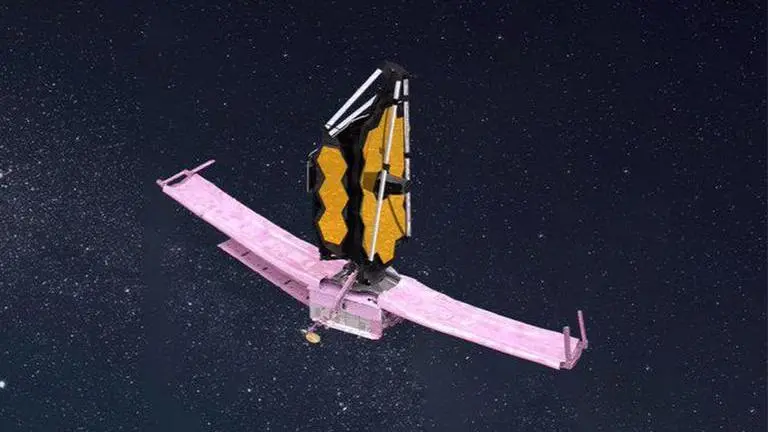Updated 30 December 2021 at 16:48 IST
NASA confirms James Webb Space Telescope will last longer than expected 10-Yr lifespan
NASA accredited the increase in expected lifespan to the successful launch and efficient manoeuvres in space which resulted in less propellant usage.
- Science News
- 2 min read

NASA has brought some good news with it this new year as it revealed that the James Webb Space Telescope (JWST) will last far longer than its previously estimated lifespan. The reason for this extended lifespan is being accredited to a successful launch and efficient manoeuvres in space which resulted in less propellant usage than what was expected. Ever since the Webb telescope was ejected from the Ariane 5 rocket's first stage booster, it is moving towards its orbit on its own using its own fuel.
More fuel, more science. Teams have determined @NASAWebb should have enough fuel to go significantly beyond 10 years of science operations! Here are the details: https://t.co/kHWGgA2xCU pic.twitter.com/IALiatq3LK
— NASA (@NASA) December 29, 2021
How will more fuel expand Webb's lifespan?
In the simplest of explanations, more propellant means more science. As of now, JWST was said to have a maximum lifespan of 10 years, but NASA scientists, after analysing the telescope's current trajectory concluded that the telescope is in for a long haul. For the unversed, Webb also carries rocket fuel that will help it for midcourse correction and insertion into orbit around its destination, the second Lagrange point (L2). Not just that, Webb would also require fuel for other functions like adjusting its orbit and maintaining its orientation in space.
NASA explained in a blog post that the excess propellant is basically due to the precision of Webb's launch aboard the Ariane 5 rocket, which according to the agency "exceeded the requirements needed to put Webb on the right path". In addition to this, two efficient mid-course correction burns also unexpectedly helped in saving a large amount of propellant. The agency added that since Webb was already in the correct attitude after separation from the Ariane 5 second stage, they did not have to put in much effort to deploy the telescope's solar array. However, the agency did clarify that Webb's duration of operation can still be affected due to other factors.
The European Space Agency (ESA), in its reports before the launch, had revealed that the Webb telescope’s propellant tanks have been filled with 79.5 litres of extremely toxic dinitrogen tetroxide oxidiser and 159-litre hydrazine. As mentioned above, the telescope will use the propellant to maintain its orbit and manage its momentum during operations in an orbit that is 1.5 kilometres away from the Earth.
Advertisement
(Image: @NASAWebb/Twitter)
Published By : Harsh Vardhan
Published On: 30 December 2021 at 16:48 IST
